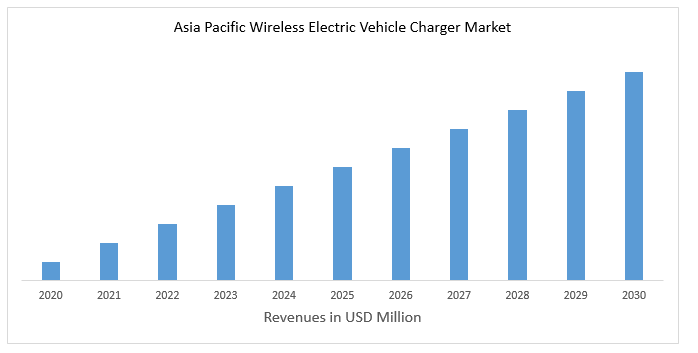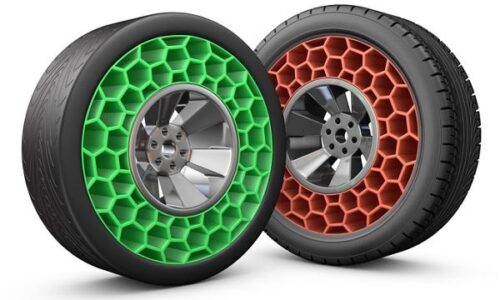The increasing Automotive Industry, Rising Government Support, and Technological Advancements and Innovation propelled the growth of the Wireless Electric Vehicle Charger market in the Asia Pacific region!
- Vikas Kumar
- November 24, 2023
- AUTOMOTIVE, NEWS
- Wireless Electric Vehicle Charger Market Analysis, Wireless Electric Vehicle Charger Market Forecast, Wireless Electric Vehicle Charger Market Growth, Wireless Electric Vehicle Charger Market Outlook, Wireless Electric Vehicle Charger Market Share, Wireless Electric Vehicle Charger Market Size, Wireless Electric Vehicle Charger Market Trends
- 0 Comments
The Asia Pacific region would exhibit the highest CAGR during 2023-2030 fueled by a combination of factors that have created a perfect storm of prosperity for this industry. At the forefront of this growth is the wireless electric vehicle charger industry in the region, which has been bolstered by rising government support and technological advancements and innovation.
The automobile industry in the Asia Pacific region has been increasing rapidly, driven by the aid of burgeoning middle classes and increased consumer spending strength. countries including China, India, and Indonesia have seen a sizeable upsurge in electric car sales, with the latter nations recording double-digit growth rates in recent years. This surge in demand for cars has, in turn, driven the need for wireless electric vehicle chargers, which are vital in electric vehicles. Moreover, there is a notable increase in investments and funding allocated towards the development and commercialization of WEV charging technology in the region. Governments and private organizations are recognizing the potential of WEV chargers in facilitating the widespread adoption of EVs, thus pumping in considerable resources to foster their growth. For instance, in March 2020, the Japanese government announced a plan to install 20,000 fast-charging stations across the country by 2025, with a budget allocation of JPY 40 billion (approximately USD 360 million). Such initiatives not only boost the demand for WEV chargers.
Access sample report (including graphs, charts, and figures): https://univdatos.com/get-a-free-sample-form-php/?product_id=45985
Additionally, the Chinese government has been actively promoting the adoption of new energy vehicles (NEVs), including electric cars and buses, through various policies and incentives. For instance, the “New Energy Vehicle Promotion Plan” launched in 2016 set a target of having NEVs account for at least 20% of all new car sales by 2025. To facilitate the charging infrastructure, the government has also invested heavily in building out a nationwide network of charging stations, including wireless charging facilities. By creating a supportive policy framework, the government has encouraged both domestic and foreign companies to invest in the WEV charger market.
Moreover, Japan has seen a rapid increase in the adoption of EVs, driven by government incentives, declining battery costs, and growing concerns about climate change. For instance, according to the report published by the International Council on Clean Transportation, Japan hit an all-time high in EV sales of 92,000 in 2022, a 109% increase over the previous year, and improved its ranking from 17th in 2021 to 13th in 2022. As the popularity of EVs grows, the need for efficient and convenient charging solutions will also increase, thereby propelling the demand for WEV chargers.
Further, the Asia Pacific Wireless Electric Vehicle Charger Market is expected to grow at a strong CAGR during the forecast period (2023-2030). Asia Pacific is anticipated to emerge as the fastest-growing wireless electric vehicle charger market primarily owing to the surge in the production of electric vehicles and government incentives and rebates on the purchase of electric vehicles. Furthermore, the technological advancements in countries such as China, and Japan have massively created the demand for the wireless electric vehicle charger market which makes it easy and accessible to a wider group of people.
FIG. 1 Asia Pacific Wireless Electric Vehicle Charger Market Revenue (2020-2030)- USD Mn
Based on type, the market is segmented into static and dynamic. Among them, Static has a high market share in 2022 and will dominate during the forecast period. This is due to the higher adoption of static as compared to dynamic as well as dynamic segment is still in the development phase for many of the countries. Moreover, static wireless charging is considered safer than dynamic charging as it eliminates the risk of electrical shock and fire hazards associated with moving parts. Static wireless charging is generally cheaper to implement than dynamic charging, primarily due to the absence of complex moving parts and the requirement for smaller power electronics.
Based on technology, the market is segmented into inductive wireless charging systems and resonant inductive wireless charging Systems. Among these, the inductive wireless charging system would sustain its higher share in the forecasted period. The major factors behind the growth of technology are its high-power transmission efficiency, simplicity, and maturity in the technology. It enables fast and convenient charging of electric vehicles without the need for cables or connectors, making it a preferred choice for consumers.
Click here to view the Report Description & TOC https://univdatos.com/report/wireless-electric-vehicle-charger-market/
Global Wireless Electric Vehicle Charger Market Segmentation
Market Insight, by Type
· Static
· Dynamic
Market Insights, by Technology
· Inductive Wireless Charging System (IWC)
· Resonant Inductive Wireless Charging System (RIWC)
Market Insight, by Region
· North America
o U.S.
o Canada
o Mexico
o Rest of North America
· Europe
o Germany
o UK
o France
o Italy
o Spain
o Rest of Europe
· APAC
o China
o Japan
o South Korea
o Rest of APAC
· Rest of the World
Top Company Profiles
· WiTricity Corporation
· Induct EV
· Qualcomm Technologies, Inc.
· HEVO Inc.
· Plugless Power
· Bombardier
· ZTE Corporation
· Continental AG
· Bosch Mobility
· Mojo Mobility Inc.


